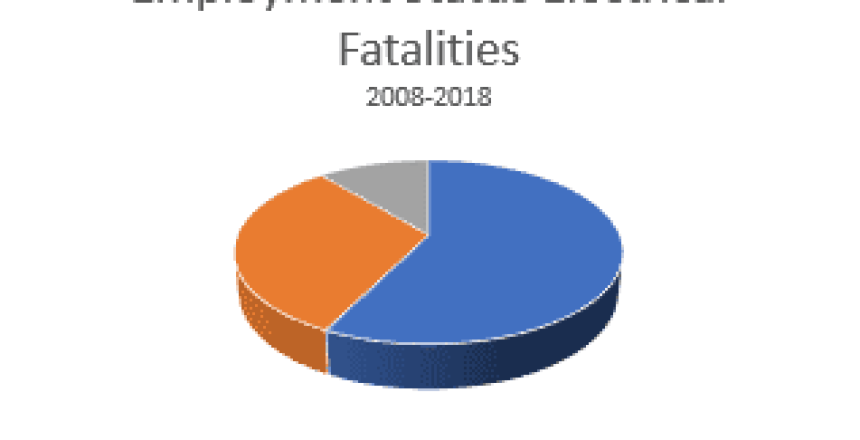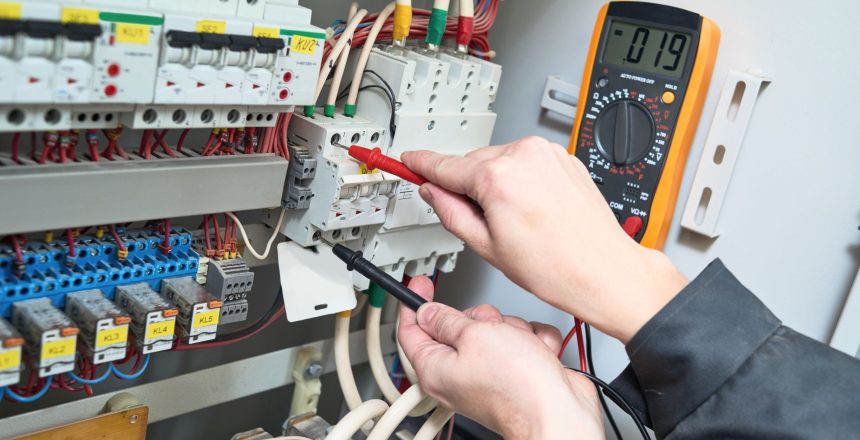The statistics are out for period 2017-2018 relating to fatalities reported to the Health and Safety Executive. The good news is that only two fatalities occurred as a result of coming into contact with electrical energy, one was an employee and the other was self-employed. This represents 1.4% of the total reportable workplace fatalities.
On average (using HSE figures 2008-2018) just less than 5 people die as a result of electrocution each year, with 2010 and 2016 being particularly bad years at 7 and 9 fatalities respectively. Electrical fatalities occur most often in the Construction Industry and those aged between 36 and 45 are most at risk. Those undertaking electrical installations account for 7% of electrocutions whereas those working in construction (other than electrical installations) account for 37% and agriculture and horticulture account for 15%.
The dangers associated with electricity are not limited to electric shock but includes electrical burns, fires of an electrical origin, arcing, electrical explosions and electrically initiated explosions. Consideration should also be given to secondary effects such as falling from height following a non-fatal electric shock. The Electricity at Work Regulations 1989 imposes 16 specific regulations intended to protect against those dangers in order to maintain a safe place of work, impose safe systems of work and have competent and safe people at work.
Looking further into the fatalities that have occurred through electric shock, it is often the case that people were going about their normal daily tasks, often having no intention of interacting with electrical systems. For many, the lack of appreciation of working near to live and bare overhead lines lead to their downfall, as they had not appreciated the dangers that existed and the consequences of making contact with an electrical system. Misunderstandings, such as believing high voltage lines to be telecom wires, or assuming that cables must be dead because they have fallen or been otherwise damaged has proven to be a costly mistake, whilst others have worked within their issued system of work but have been exposed to danger through the action (or lack of action) by others who have left an electrical system in an unsafe state.
Poor or non-existent maintenance arrangements feature high on the list of underlying causes as does failure to have robust safe systems of work that are appropriate to the work, the individual and the equipment being worked upon. In many cases, where interaction with electrical conductors is necessary the switching off supply might have been in place, but the proving dead aspect of safe isolation was absent. In other cases, the securing of a point of isolation was absent or there was a lack of understanding of the system to be worked on. Some instances saw non-electrical persons undertaking electrical work, often under instruction of their employer but sometimes as a result of individuals eagerness to solve a problem or to prove their worth.
In every case, electrocution could have been avoided. The responsibility to stay safe rests equally with employers, employees and the self-employed. Employers must provide a safe electrical system and ensure that procedures are in place to ensure that those who interact with it can do so safely. Risk Assessment and Competency both feature highly on their check-list, identifying the risks posed by electrical energy, ensuring that control measures reduce risk as low as is reasonably practicable, and ensuring that only those who have the knowledge and experience to avoid danger carry out work on that system.
For those who undertake electrical work, including those who work on or near electrical equipment as part of their works there is a need to follow safe systems of work and to work with due care and attention so as not to put themselves at risk or expose others to the dangers associated with electricity. Design, installation and verification of work are all important factors and having the correct equipment to do the job, and importantly, knowing how to use it are essential.
Going back to where we started, those often put at risk are not undertaking electrical work but are working so near to electrical systems that they are in danger. Safe systems of work apply equally to these persons as they do to electricians, technicians and engineers. Having procedures in place for working near buried services or in proximity to overhead lines are just as important as having rules for undertaking electrical work, and managing such work properly is very important. Those who interact with electrical equipment that is badly maintained or has been installed or modified by a person who is not competent or capable of doing the work is also a major area of exposure to which too many people have lost their lives through no fault of their own.
Everyone has a duty to reduce the number of fatal electrical incidents to zero, in order to do this, we need to reduce the numbers of electrical survivable injuries, for which no official HSE data exists. The dangers associated with electrical energy must never be dismissed, and no-one should ever assume that they will ‘get away with it’ by doing what ‘needs’ to be done.




